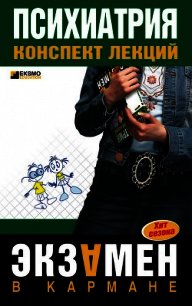Английский язык для медиков: конспект лекций - Беликова Елена (книги хорошем качестве бесплатно без регистрации .txt) 📗
ЛЕКЦИЯ № 34. Nasal cavities
The anatomical structures that play a central role in the res piratory system are located in the head and neck as well as the thorax.
Nasal cavities are separated by the nasal septum, which consists of the vomer, the perpendicular plate of the ethmoid bone, and the septal cartilage. The lateral wall of each nasal cavity features three scroll-shaped bony structures called the nasal conchae. The nasal cavities communicate posteriorly with the nasopharynx through the choanae. The spaces inferior to each concha are called meatus. The paranasal sinuses and the nasolacrimal duct open to the meati. The inferior concha is a separate bone, and the superior and middle conchae are parts of the ethmoid bone.
Inferior meatus. The only structure that opens to the inferior meatus is the nasolacrimal duct. This duct drains lacrimal fluid (i. e., tears) from theTneaTaraspect of the orbit to the nasal cavity.
Middle meatus: the hiatus semilumaris contains openings of frontal and maxillary sinuses and americy ethmoidal air cells. The bulla ethmoidalis contains the opening for'the middle ethmoidal air cells.
Superior meatus contains an opening for thffposterior ethmoidal air cells.
Sphenoethmoidal recess is located above the superior concha and contains an opening for the sphenoid sinus.
Innervation: Somatic innervation. General sensory information from the lateral wall and septum of the nasal cavity is conveyed to the CNS by branches of V, and V2.
Autonomic innervation. Preganglionic parasympathetic fibers destined to supply the glands of the nasal mucosa and the lacrimal gland travel in the nervus intermedius and the greater superficial petrosal branches of the facial nerve (CN VII). These fibers synapse in the pte-rygopalatine ganglion, which is located in the pterygopalatine fossa. Postganglionic fibers traveling to the mucous glands of the nasal cavity, paranasal air sinuses, hard and soft palate, and the lacrimal gland follow branches of V2 and in some cases V1, to reach their destinations.
New words
anatomical – анатомический play – игра
central role – центральная роль
respiratory system – дыхательная система
head – голова
neck – шея
nasal cavities – носовые впадины
to be separated – быть отделеным
the perpendicular plate – перпендикулярная пластина
ethmoid – решетчатый
septal – относящийся к перегородке
nasal conchae – носовой раковина
communicate – взаимодействовать
posteriorly – сзади
paranasal – параносовой
sinuses – пазухи
nasolacrimal – назолакримальный
duct – трубочка
drain – проток
tears – слезы
orbit – орбита
hiatus – пауза
maxillary – верхнечелюстной
bulla – пузырь
Поставьте глагол to be в правильную форму, заполнив пропуски.
1. I… a pupil.
2. My father… not a teacher, he… a scientist.
3… your sister a teacher?
4. Mary. a painter.
5… they at home?
6. My father. a worker.
7. She… at work.
8.. you a doctor?
9. He… a pilot.
10. We… students.
11. They… carpenters.
12… they at home?
13. they… not at home
14. He… at work.
15… your sister a typist?
16… your brother at school?
17… your sister in the cabinet?
18. My sister… at home.
19… this your cat?
20. She… an actress.
21. This… my bag.
22. He… professor.
23. Helen… a singer.
24… you an engineer?
25. He… Russian.
Переведите на английский язык, употребляя глагол to be в Present Simple.
1. Я ученик. Я в школе.
2. Мой брат художник. Он не инженер.
3. Моя сестра на работе. Она врач.
4. Он студент, а не учитель.
5. Вы студент? – Нет, я ученик.
6. Моя сестра дома. Она больна.
7. Мы не в школе. Мы дома.
8. Мой брат ученик. Он в школе.
9. Ваша мама дома? – Нет, она на работе.
10. Ваш двоюродный брат дома? – Нет, он в школе.
11. Твоя сестра здорова сейчас? – Да, она здорова.
12. Ваша сестра учительница? – Нет, она студентка.
13. Твой папа на работе? Нет, он на даче.
14. Твоя сестра машинистка? – Да. Она машинистка.
15. Моя мама не учительница. Она врач.
16. Чья это ручка? – Это моя ручка.
17. Чья это книга? – Это ваша книга.
18. Чей это стол? – Это стол моего брата.
19. Чья это сумка? – Это сумка моей мамы.
20. Чей это карандаш? – Это карандаш моей сестры.
21. Это твоя тетрадь? – Да, это моя тетрадь.
22. Это тетрадь твоего брата? – Нет, это моя.
23. Где ваш стол? – Он посередине комнаты.
24. Где твоя ручка? – Она в моем кармане.
25. Где твоя тетрадь? – Она на столе.
26. Мой дедушка не ученый, он геолог.
Answer the questions.
1. What is the cell consists of?
2. What is a membrane?
3. Is cell the smallest independent unit of the body?
4. What can be grown in test – tubes?
5. What can various tissues form, when they are together?
6. What are the organ system consist of?
7. What are cell characterized by?
8. What are cell organelles?
9. What ate membranes?
10. What is the cytoplasm?
Make the sentences of your own using the new words (10 sentences).
Find the verb to be in the text. Explain why it is used in such a way?
Find one word, which is a little bit different in meaning from others (найдите одно слово, которое немного отличается от других по смыслу):
1) a) cell; b) body; c) flower;
2) a) life; b) plate; c) people;
3) a) test-tube; b) microscope; c) pen;
4) a) curtain; b) body; c) tissue;
5) а) spoon; b) kidney; c) liver.
ЛЕКЦИЯ № 35. Pharynx and related areas
The pharynx is a passageway shared by the digestive and respira tory systems. It has lateral, posterior, and medial walls through out, but is open interiorly in its upper regions, communicating with the nasal cavity and the oral cavity. The anterior wall of the laryngopharynx is formed by the larynx. The pharyngeal wall con sists of a mucosa, a fibrous layer, and a muscularis, which is com posed of an inner longitudinal layer (i. e., stylopharyngeus, palatopharyngeus, salpingopharyn-geus) and an outer circular layer (i. e., superior, middle, inferior constrictor muscles).
Nasopharynx is the region of the pharynx located directly poste rior to the nasal cavity. It communicates with the nasal cavity through the choanae (i. e., posterior nasal apertures).
The torus tubarius is the cartilaginous rim of the auditory The pha-ryngeal recess is the space located directly above and behind the torus tubarius; it contains the nasopharyngeal tonsil. The salpingopharynge-al fold is a ridge consisting of mucosa and the underlying salpingopha-ryngeus muscle, which runs down the wall of the pharynx from the torus tubarius.
Oropharynx is the region of the pharynx located directly posterior to the oral cavity. It communicates with the oral cavity through a space called the fauces. The fauces are bounded by two folds, consisting of mucosa and muscle, known as the anterior and posterior pillars.
The anterior pillar of the fauces, also known as the palatoglossal fold, contains the palatoglossus muscle.
The posterior pillar of the fauces, also known as the palatopharyn-geal fold, contains the palatopharyngeus muscle. The tonsillar bed is the space between the pillars that houses the palatine tonsil.




